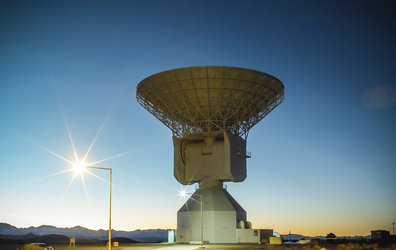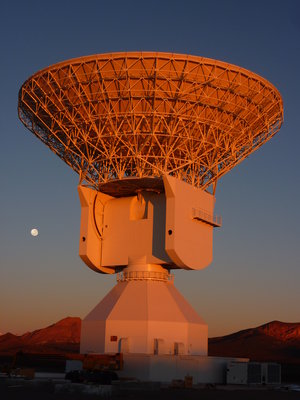Laser communications set for Moon mission
An advanced laser system offering vastly faster data speeds is now ready for linking with spacecraft beyond our planet following a series of crucial ground tests. Later this year, ESA’s observatory in Spain will use the laser to communicate with a NASA Moon orbiter.
The laboratory testing paves the way for a live space demonstration in October, once NASA’s Lunar Atmosphere and Dust Environment Explorer – LADEE – begins orbiting the Moon.
LADEE carries a terminal that can transmit and receive pulses of laser light. ESA’s Optical Ground Station on Tenerife will be upgraded with a complementary unit and, together with two US ground terminals, will relay data at unprecedented rates using infrared light beams at a wavelength similar to that used in fiber-optic cables on Earth.

“The testing went as planned, and while we identified a number of issues, we’ll be ready for LADEE’s mid-September launch,” says Zoran Sodnik, manager for ESA’s Lunar Optical Communication Link project.
“Our ground station will join two NASA stations communicating with the LADEE Moon mission, and we aim to demonstrate the readiness of optical communication for future missions to Mars or anywhere else in the Solar System.”
Testing new European technology
The testing took place in July at a Zurich, Switzerland, facility owned by ESA’s industrial partner RUAG and made use of a new detector and decoding system, a ranging system and a transmitter.
A NASA team, supported by the Massachusetts Institute of Technology, Lincoln Laboratory and the Jet Propulsion Laboratory, brought over their laser terminal simulator, while ESA together with RUAG and Axcon of Denmark set up the European equipment to test compatibility between the two sets of hardware.

“This interagency optical compatibility test was the first of its kind, and it established the uplink, downlink and the ranging measurement,” says ESA’s Klaus-Juergen Schulz, responsible for ground station systems at the European Space Operations Centre, Darmstadt.
The first laser link-up with LADEE is expected to be attempted four weeks after launch, around mid-October.
Laser pathways to future space communication
Laser communications at near-infrared wavelengths may be the way of the future when it comes to downloading massive amounts of data from spacecraft orbiting Earth, Mars or even more distant planets.
These units are lighter, smaller and need less power than today’s radio systems, promising to cut mission costs and provide opportunities for new science payloads.
In addition, DLR, the German Aerospace Center, has developed satellite-to-satellite laser communication terminals embarked as technological demonstration payload on the Alphasat mission. ESA plans to use the optical communication terminal developed by Germany as the main operational payload for its European Data Relay System missions (more information).















 Germany
Germany
 Austria
Austria
 Belgium
Belgium
 Denmark
Denmark
 Spain
Spain
 Estonia
Estonia
 Finland
Finland
 France
France
 Greece
Greece
 Hungary
Hungary
 Ireland
Ireland
 Italy
Italy
 Luxembourg
Luxembourg
 Norway
Norway
 The Netherlands
The Netherlands
 Poland
Poland
 Portugal
Portugal
 Czechia
Czechia
 Romania
Romania
 United Kingdom
United Kingdom
 Slovenia
Slovenia
 Sweden
Sweden
 Switzerland
Switzerland
































